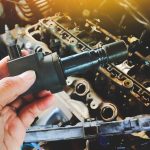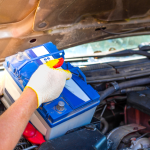In the high-octane world of Formula 1, every millisecond counts, and strategies can make or break a race. Among the various tools and techniques that drivers employ to shave crucial seconds off their lap times, one stands out for its game-changing potential: DRS, or Drag Reduction System. But what exactly does DRS mean in F1, and how does it contribute to the thrilling spectacle that fans adore?
In this article, we’ll delve into the mechanics of DRS, explore its impact on race dynamics, and uncover why it’s considered a key component to achieving speed on the track. Whether you’re a seasoned F1 enthusiast or just starting to explore the sport, understanding DRS is essential for appreciating the fine line between victory and defeat in this fast-paced arena. Let’s accelerate into the details!
Table of Contents
- Understanding the Basics of DRS and Its Role in Formula 1
- How DRS Enhances Overtaking Opportunities on the Track
- The Strategic Use of DRS: Timing and Tactics for Drivers
- Future Innovations and Changes in DRS Regulations in F1
- Q&A
- To Conclude

Understanding the Basics of DRS and Its Role in Formula 1
Drag Reduction System (DRS) is a fascinating feature in Formula 1, designed to enhance overtaking opportunities and increase the speed of the cars during a race. When activated, DRS adjusts the rear wing’s angle, reducing aerodynamic drag and allowing drivers to gain additional speed on long straights. This system is particularly effective in aiding overtaking maneuvers, making races more exciting as drivers can close the gap to their opponents more quickly. However, DRS is only enabled under specific conditions, primarily when a driver is within one second of the car in front at designated DRS detection points.
Understanding DRS also involves grasping its strategic implications within different race scenarios. Drivers must be astute in managing their DRS usage and utilizing it at the right moments to maximize its benefits. Here are some key factors to consider regarding DRS:
- Activation Zones: Specific track sections where DRS can be activated.
- Usage Limitations: DRS cannot be used during wet conditions or if the race is under caution.
- Strategic Deployment: Knowing when to use DRS can be the difference between gaining or losing positions.

How DRS Enhances Overtaking Opportunities on the Track
The Drag Reduction System (DRS) is a game-changer in the world of Formula 1, specifically designed to facilitate overtaking maneuvers during races. When activated, DRS modifies the rear wing’s position, significantly reducing aerodynamic drag and allowing cars to achieve higher speeds on straights. This strategic advantage becomes particularly crucial in high-speed sections of the circuit, where drivers can capitalize on their opponents’ slipstream. The implementation of DRS creates dynamic racing conditions, ensuring that fans are treated to thrilling battles for position, elevating the sport’s excitement and competitiveness.
To optimize the use of DRS, certain conditions must be met, including being within a second of the car in front at designated DRS zones. This regulation adds a tactical layer to racing, prompting drivers to decide when best to deploy the system. Factors influencing successful overtaking with DRS include:
- Timing: Knowing when to activate DRS is crucial for maintaining momentum.
- Positioning: Entering the DRS zone closely behind another driver can maximize speed advantages.
- Track Layout: Certain circuits offer more effective DRS zones due to their straights.
Below is a simple overview of some circuits known for their prominent DRS zones:
| Circuit | DRS Zones |
|---|---|
| Monza | 2 |
| Silverstone | 1 |
| Barcelona | 1 |
| Suzuka | 1 |
In this way, DRS not only enhances overtaking opportunities but also adds a layer of strategic depth to races, allowing skilled drivers to outmaneuver competitors in electrifying showdowns.

The Strategic Use of DRS: Timing and Tactics for Drivers
In the high-octane world of Formula 1, the Drag Reduction System (DRS) serves as a pivotal tool that can significantly influence race outcomes. Drivers must carefully consider their use of DRS to maximize its benefits. Effective timing is crucial; activating DRS at the right moment can help a driver close the gap to an opponent or overtake them on a straight. A well-executed DRS maneuver not only boosts speed but can also serve as a psychological tactic, forcing competitors to alter their racing lines or strategy.
To master DRS usage, drivers often rely on meticulous planning and real-time judgement. Key factors that influence the strategic deployment of DRS include:
- Race Position: Knowing when to activate DRS during different phases of the race can be a game-changer.
- Competitor Behavior: Observing rivals’ movements and tire conditions can inform the decision to engage DRS.
- Sector Performance: Understanding the layout of the track and identifying DRS zones can enhance a driver’s advantage.
The table below summarizes optimal DRS usage scenarios:
| Scenario | Recommended Action |
|---|---|
| Chasing an opponent | Activate DRS at the DRS zone |
| Defending against an overtaking attempt | Use DRS defensively if applicable |
| After a pit stop | Utilize DRS to quickly regain position |

Future Innovations and Changes in DRS Regulations in F1
The landscape of DRS (Drag Reduction System) in Formula 1 is continuously evolving, driven by the need for more competitive racing and enhanced spectator engagement. Future innovations may include:
- Dynamic DRS Zones: Implementing adjustable zones on circuits that can adapt based on real-time race conditions to foster more overtaking opportunities.
- Driver-Controlled Activation: Giving drivers the ability to manually activate DRS beyond the designated zones, possibly leading to strategic battle between drivers.
- Integration with AI: Utilizing artificial intelligence to analyze race data and suggest optimal DRS usage during a race, optimizing performance and strategy.
As teams and regulators assess the implications of these potential changes, safety concerns and competitive fairness will remain forefront. The discussion may also lead to:
- Tech Restrictions: Limiting the technological enhancements associated with DRS to ensure a level playing field.
- Feedback Mechanisms: Establishing systems for fans and drivers to voice their opinions on DRS effectiveness and its impact on the sport.
- Regulatory Refinements: Adjusting the rules governing DRS usage to maintain excitement while mitigating the potential for unfair advantages.
Q&A
Q&A: Understanding DRS in Formula 1
Q1: What does DRS stand for in Formula 1?
A1: DRS stands for Drag Reduction System. It is a technology used in Formula 1 cars to reduce aerodynamic drag and increase straight-line speed during specific conditions during a race.
Q2: How does DRS work?
A2: DRS works by adjusting the angle of the rear wing on a Formula 1 car. When activated, the flap on the rear wing opens, allowing air to flow more freely, reducing downforce and drag. This enables the car to achieve higher speeds, particularly on straights.
Q3: When can drivers use DRS?
A3: DRS can be used under certain conditions. It is activated in designated DRS zones on the track, which are usually located on long straights. To use DRS, a driver must be within one second of the car in front at a DRS detection point. The system is disabled in wet conditions or if a driver goes off track.
Q4: Why is DRS important in Formula 1?
A4: DRS plays a crucial role in enhancing overtaking opportunities during races. By providing a speed advantage, it helps level the playing field, allowing drivers to close the gap to their competitors and attempt to overtake them. This adds excitement and strategy to the racing experience.
Q5: Does DRS create an unfair advantage?
A5: While DRS can provide a speed boost, it is designed to promote competitive racing rather than create unfair advantages. The requirement to be within one second of the car ahead means that it can only be used effectively with skill and strategy, thus maintaining the importance of driver performance and race tactics.
Q6: Are there any restrictions on DRS use?
A6: Yes, there are restrictions. DRS can only be activated in specific zones marked on the track, and drivers must adhere to the rules regarding timing and tracking. Additionally, DRS is disabled if a driver is under investigation for an infringement or if it is deemed too dangerous due to weather conditions.
Q7: Has DRS changed the way races are approached?
A7: Absolutely! The introduction of DRS has influenced race strategies, as drivers and teams consider when to push for overtakes or defend against them. It has added a new layer of excitement and unpredictability to racing, making it essential for both drivers and teams to adapt to the system’s capabilities and limitations.
Q8: What happens if a driver misuses DRS?
A8: If a driver misuses DRS, such as activating it when they are not eligible, they can face penalties from race officials. Teams and drivers must be mindful of the rules governing DRS to avoid any infringements that could affect their race.
Q9: Is DRS used in other racing series?
A9: Yes, other racing series, including Formula E and some touring car championships, have adopted similar systems to enhance overtaking and competitiveness. However, the specific rules and implementations may vary from series to series.
Q10: How can fans learn more about DRS and its impact on races?
A10: Fans can stay informed by following F1 broadcasts, where experts often discuss DRS strategies during races. Additionally, many online platforms, podcasts, and fan forums delve into the intricacies of DRS and its role in Formula 1, making it easier for enthusiasts to understand this vital aspect of the sport.
To Conclude
DRS, or Drag Reduction System, plays a pivotal role in the thrilling world of Formula 1 racing. By allowing drivers to reduce aerodynamic drag and increase straight-line speed, DRS not only enhances overtaking opportunities but also adds an extra layer of strategy to the sport. Understanding how DRS works and its regulations helps fans appreciate the skill and tactics that go into each race. As you watch the next Grand Prix, keep an eye out for those DRS zones—those brief moments of added speed can turn the tide of a race in an instant! Thank you for joining us on this exploration of DRS in F1, and we hope you enjoy the excitement and unpredictability that this incredible technology brings to the track!











